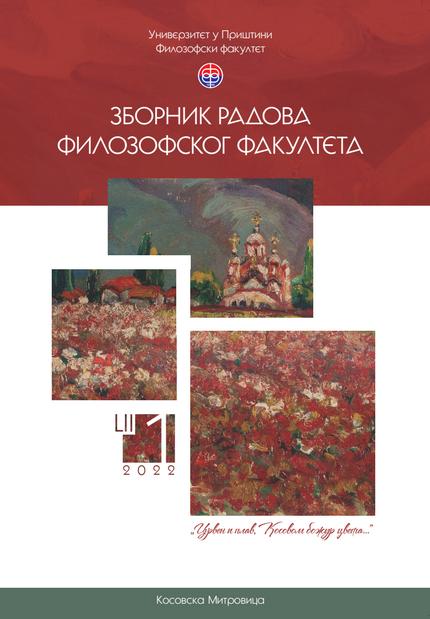О споразуму Стојадиновић - Павелић 1954. године (чињенице и претпоставке)
Sažetak
На основу доступне архивске грађе, оновремене штампе и литературе, у раду се анализирају доступне информације о споразуму бившег председника југословенске краљевске владе Милана Стојадиновића и поглавника НДХ Анте Павелића. У том периоду обојица су живела у Аргентини, која је била под управом председника Хуана Перона. Средином 1954. године изјавама у штампи они су покренули полемику у емигрантским круговима а основ тога била је идеја о разбијању Југославије и формирању независних држава Србије и Хрватске. Стојадиновић и Павелић су се у том периоду посећивали и више пута разговарали на ту тему. Циљ рада је да се на основу постојећих сведочанстава изнесу закључци који ће покушати да дају одговоре на питања да ли је споразум постојао и ако јесте, шта је у њему писало, која је била његова улога и каква му је била позадина.
Reference
Димић, Љ. (2012). Одлазак са Маурицијуса. Британци и Милан Стојадиновић (1945–1948). Глас Српске академије наука и уметности, CDXX, 16, 495–518.
Ђикановић, В. (2012). Сава Н. Косановић – Југословенски амбасадор у Вашингтону 1946–1950. У: С. Селинић (ур.), Југословенска дипломатија 1945–1961. (171–190). Београд: Институт за новију историју Србије.
Ђурковић, М. (2013). Увод: Енигма Милан Стојадиновић. У: М. Ђурковић (прир.), Милан Стојадиновић: Политика у време глобалних ломова (7‒26). Београд: Завод за уџбенике – Центар за конзервативне студије.
Симић, Б. (2019а). Српска емиграција у Аргентини у првој деценији након Другог светског рата – прилог истраживању проблема. Годишњак за друштвену историју, 2, 55–68.
Симић, Б. (2019б). У сребрном кавезу – Милан Стојадиновић на Маурицијусу (1941–1948), Баштина, 47, 343–356.
Симић, Б. (2021). Југославија и Аргентина 1946–1955. Београд: Институт за новију историју Србије.
Стојадиновић, М. (1976). Заточеник његовог британског величанства. Мелбурн: Српска мисао.
Bogetić, D. (2000). Jugoslavija i Zapad 1952–1955. Jugoslovensko približavanje NATO-u. Beograd: Službeni list SRJ.
Delić, A. (2016). Djelovanje Ante Pavelića 1945–1953. godine (необјављена докторска дисертација). Sveučilište u Zadru, Poslijediplomski Sveučilišni studij „Humanističke znanosti“.
Goñi, U. (2002). The Real Odessa. How Peron Brought the Nazi War Criminals to Argentina. London – New York: Granta Books.
Krizman, B. (1986). Pavelić u bijekstvu. Zagreb: Globus.
Luna, F. (2015). Kratka istorija Argentinaca. Novi Sad: Akademska knjiga.
Nikolić, V. (1976). Pred vratima domovine: susret s hrvatskom emigracijom 1965. Knj.2. Dojmovi i razgovori. Pariz – Minhen: Knjižnica Hrvatske revije.
Pino, A. & Cingolani, G. (2018). Nationalism and Terror. Ante Pavelić and Ustasha Terrorism from Fascism to the Cold War. Budapest – New York: CEU Press.
Detalji u vezi sa uređivačkom politikom, uključujući i autorska prava, dostupni su na sajtu SCIndeks.
http://scindeks.ceon.rs/journalDetails.aspx?issn=0354-3293

